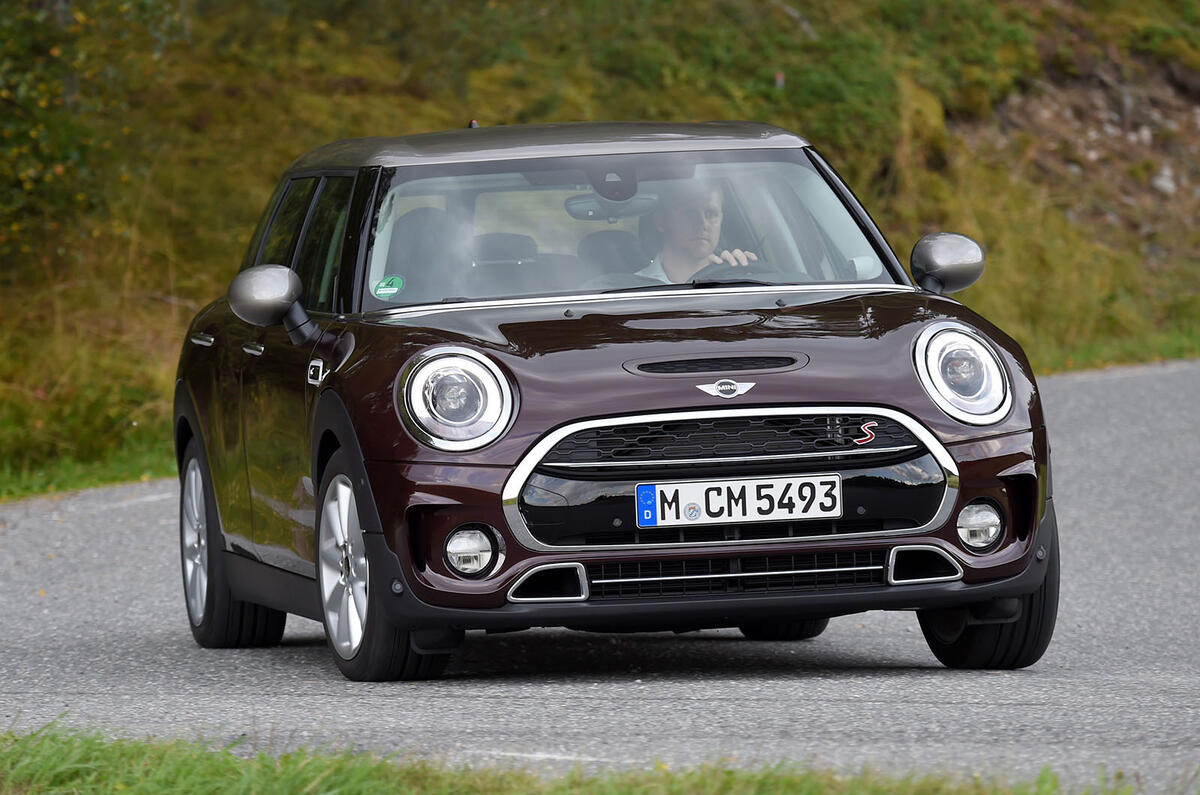What is it?
The Mini Clubman has been reinvented as a considerably larger and roomier estate-style car. The new Clubman is setting out to provide improved levels of comfort and practicality in a bid to broaden its appeal against a growing number of premium hatchbacks.
Gone is the idiosyncratic layout of the old Clubman, which used two conventional front doors and a single rear-hinged (‘suicide’) door at the rear. It has been replaced with a far more conventional body that features four front-hinged side doors.
An even more radical departure is the increase in size. At 4253mm in length, the new Clubman is a significant 293mm longer than its predecessor, which was introduced to the UK in 2007. The new Clubman is also 115mm wider (at 1800mm) and 16mm taller (at 1441mm) than before.
To put the wholesale increase in exterior dimensions into perspective, the latest Mini is 158mm longer, 10mm wider and 119mm lower than the largest of the existing Mini models, the Countryman.
Despite these changes, the new Clubman is immediately recognisable as a Mini, with an exterior design that draws heavily on the latest hatchback. Key elements include a large single-frame grille, oval-shaped headlights with LED graphics and a heavily rounded clamshell-style bonnet.
Further back, the new Clubman adopts a breather element to draw air from the front wheelarches, a chrome housing for the side repeater lights and four frameless side doors, those at the rear extending well into the wheel arches for added ease of entry.
As with the previous Clubman, the new model forgoes the conventional hatchback tailgate of other modern Minis for a pair of barn-style doors that feature a prominent chrome opening mechanism. The vertically stacked tail-lights of other Mini models are also replaced by horizontal units, providing the new car with added visual width.
The new front-wheel-drive Clubman will be offered with turbocharged three-cylinder and four-cylinder petrol and diesel engines from the start of UK sales. The new-generation powerplants, already seen in other new Mini models, come mated to a standard six-speed manual or optional eight-speed automatic gearbox.
The new auto replaces the six-speed unit used by the old Clubman and brings enhanced stop-start and brake energy recuperation functions as well as a coasting feature that idles the engine on a trailing throttle between 19mph and 62mph to save fuel.
The model tested here is the initial performance leader, the Clubman Cooper S. Instead of the turbocharged 1.6-litre four-cylinder engine of its predecessor, it has a more contemporary turbo 2.0-litre four-cylinder unit. Along with the rise in capacity, power has climbed by 8bhp to 189bhp and torque has increased by 29lb ft to 206lb ft.
Underpinning the Clubman is the versatile UKL platform of parent company BMW. It uses the same 2670mm wheelbase as the BMW 2 Series Active Tourer. That’s 125mm longer than the wheelbase of the old Clubman and 175mm longer than that of the latest hatchback.
As with all new Mini models, the suspension uses MacPherson struts up front and a compact multi-link arrangement at the rear. It can be enhanced with optional dynamic damper control, which provides the choice between Sport and Comfort settings. The standard wheels for the Clubman Cooper S are 17in and they come with 245/45 tyres.







































Join the debate
Add your comment
Dear Autocar
Better in the metal
A Mini bigger than a Skoda